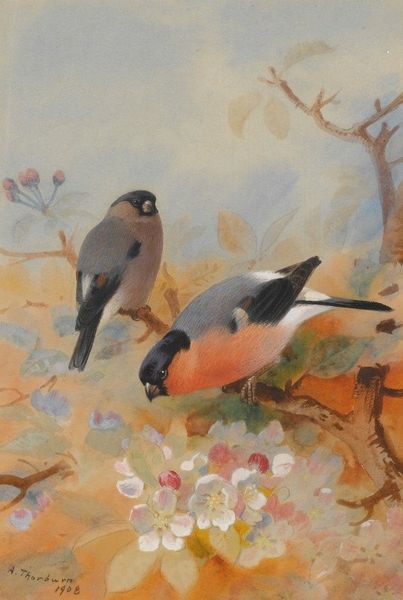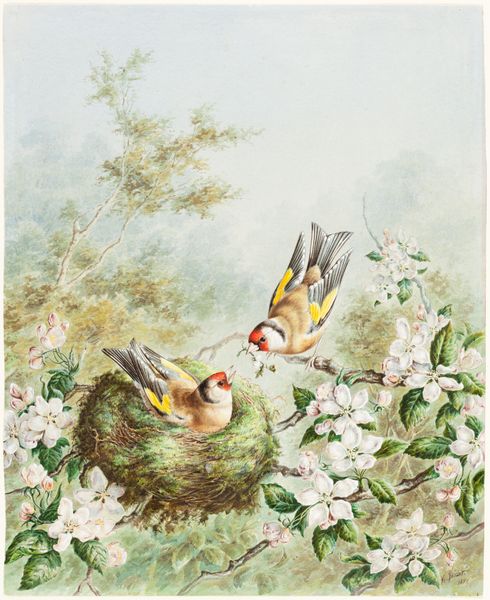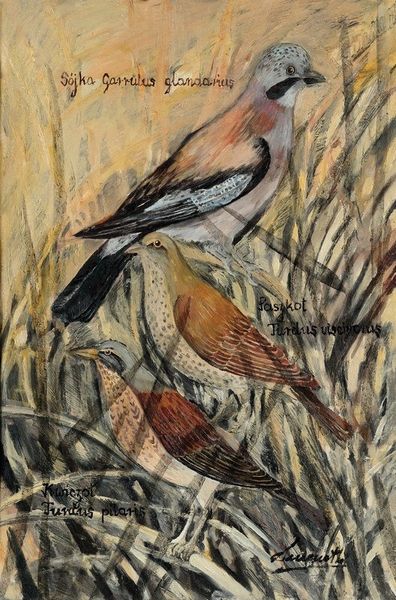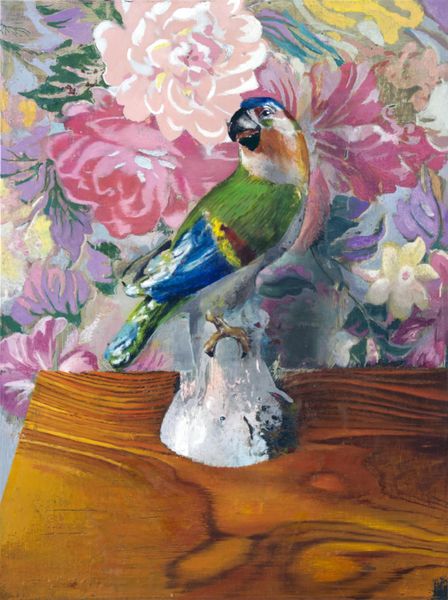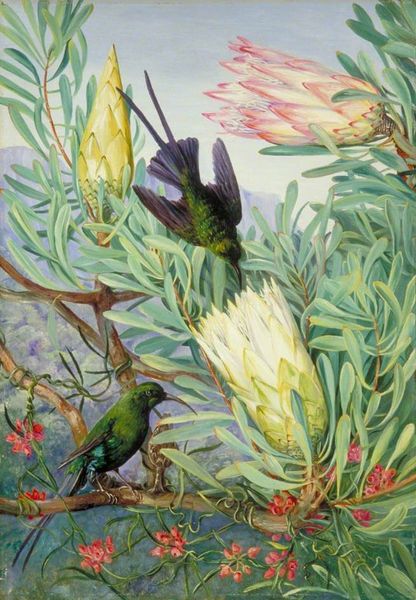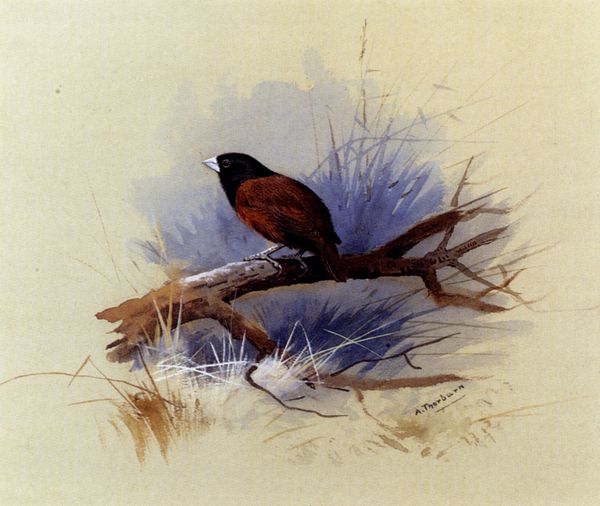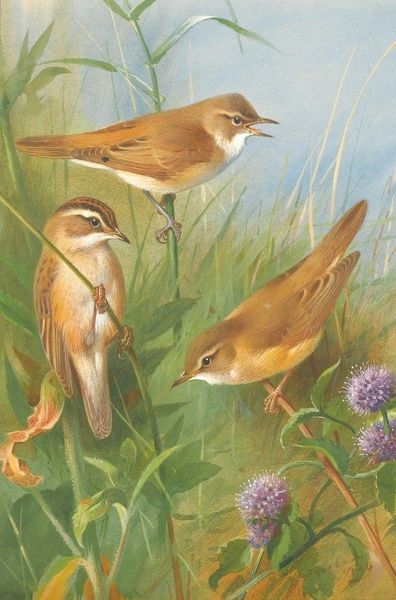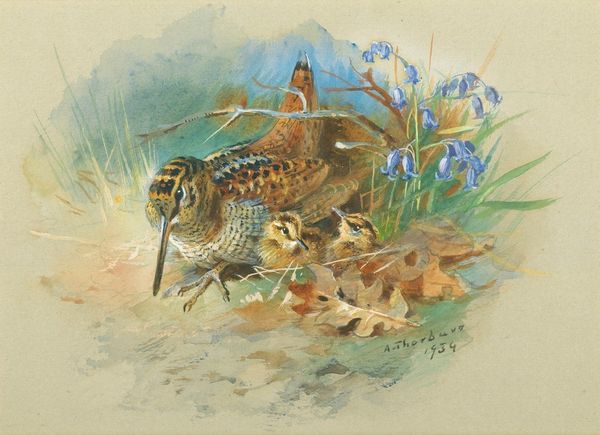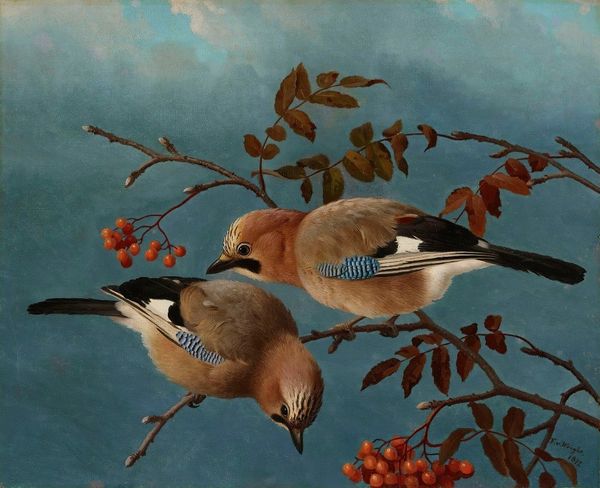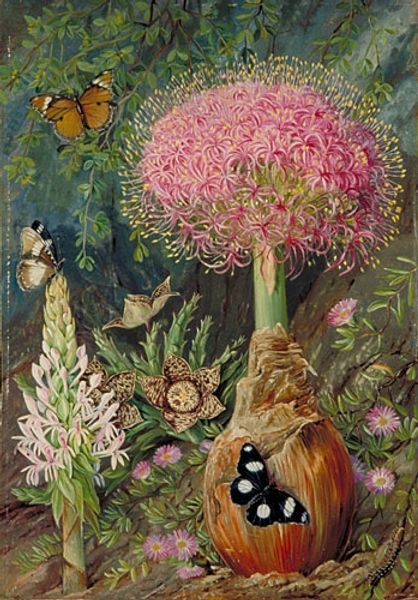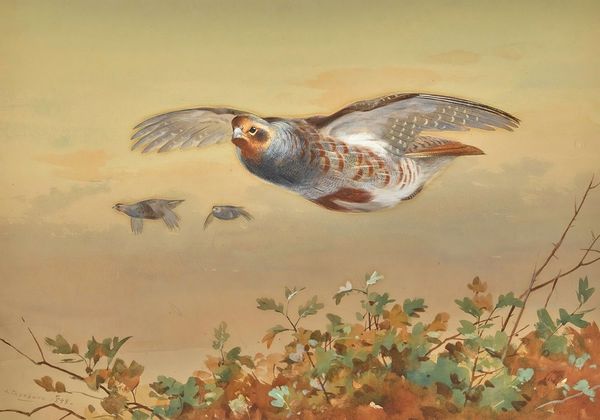
drawing, painting, plein-air, watercolor
#
drawing
#
painting
#
plein-air
#
landscape
#
bird
#
flower
#
figuration
#
watercolor
#
plant
#
watercolour illustration
#
watercolor
#
realism
Dimensions: 36.8 x 26.7 cm
Copyright: Public domain
Editor: Here we have Archibald Thorburn's "Bluetits On A Teasel," a watercolour painting from 1922. I’m struck by the stillness and detail, almost like a photograph, yet imbued with such soft light. What's your take on this piece? Curator: The hyperrealism pulls us in, doesn’t it? But let’s not overlook the date. 1922 was a time of massive ecological change and loss due to human impact, even in the countryside. Isn't it possible to see this not just as observation, but as a quiet, potent act of preservation? Editor: Preservation in what sense? Do you mean highlighting the beauty of nature? Curator: More than just aesthetic appreciation, I think. Consider how much habitat has vanished since 1922. Thorburn’s decision to portray these birds in such detail feels like a statement. He's calling attention to the species itself and to the plant that sustains it. Think about the role of artists at that time - often from privileged backgrounds. What responsibilities did that privilege carry? Editor: So you're suggesting the painting is a subtle form of ecological activism, even a critique of unchecked industrial growth? Curator: Precisely. And who are these bluetits? What is their symbolic meaning? We see here the microcosm of an environment under duress, depending on a fragile and rapidly disappearing world. Can art spur action? Can it highlight the issues related to race and class inherent in accessing nature? These are just some of the questions which Thorburn's lovely watercolour raises for me. What do you think? Editor: That really reframes my understanding. I was focused on the pretty surface, but now I see layers of social and ecological commentary. Curator: It’s a call to action, then, in the form of aesthetic contemplation. Editor: Thanks. That perspective gives the painting so much more weight.
Comments
No comments
Be the first to comment and join the conversation on the ultimate creative platform.

